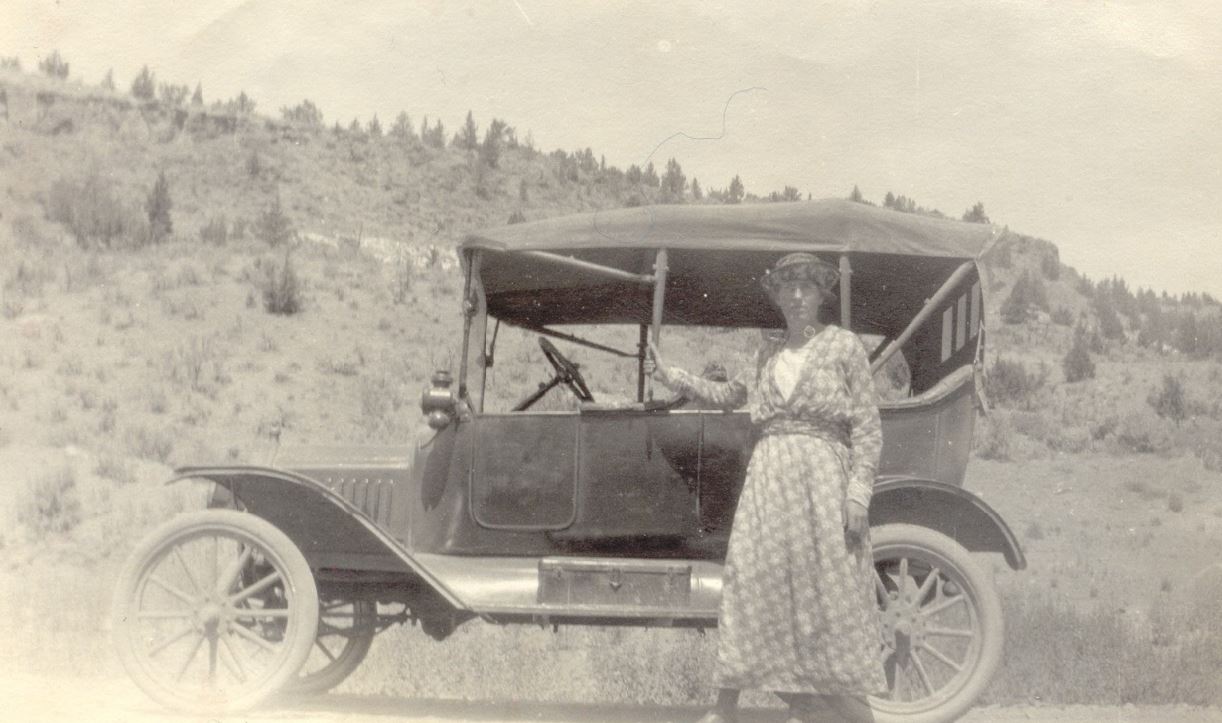




Early automobile travel in Central Oregon was a true adventure as there was a maze of crossing roads and no traffic signs to identify routes. All roads were narrow and rutted so it was hard to determine which road was a main road. Often motorists would find themselves wandering to an isolated ranch or a patch of thick timber at the end of one of the primitive roads. Innovative local groups established a system of color coding roads with bands of paint to designate main travel routes.
The main road through Central Oregon was the “White and Blue” road and the colors were painted on telephone poles, fence posts and trees. The commercial club organizations (forerunners of Chambers of Commerce) of Bend, Redmond and Prineville undertook the initial painting effort.
Each highway was assigned its own particular color and early maps were printed to identify the destination of the color coded roads. An early motorist visiting Central Oregon in 1916 noted that “the White and Blue route indicated by the white and blue paint, leads the traveler easily and unerringly.
Unfortunately the color code scheme only existed in the immediate Central Oregon vicinity and as traffic moved north, east or west roads became once more complicated to follow. Also it did not take young pranksters long to alter the color scheme at major intersections which led some motorists to wander until they discovered another color marker or find assistance from other travelers or ranchers. It was not uncommon for a wandering motorist to spend the evening as the guest of a rancher or farmer after having taken the wrong road.
The color coding was used for several years until more modern roads were constructed. Even today some old juniper trees or rotting fence post have faded paint that once designated the main traffic routes. Traffic traveled slowly with speeds rarely exceeding 30 miles per hour so painted objects could be easily identified and followed. It was a simple solution for traffic flow in a time when travel by automobile was adventurous.